The Big Short: Film and Book
I’ve never worked a day of my life on Wall Street and, in fact, have never knowingly spoken with someone who has. Still, it is child’s play to uncover the vast roles Jews play in New York’s financial district. For that matter, it is not that hard to show how Hollywood consistently covers up those roles, particularly when it comes to gross misbehavior.
This is sort of the case when it comes to Michael Lewis’s 2010 book The Big Short: Inside the Doomsday Machine, as well as the film version in 2015. I say “sort of” because, first, in both stories, it is unclear whether the unfathomable sums of money lost on Wall Street was a result of fraud, stupidity, or simply not understanding immensely complex financial instruments.
Second, this time Hollywood cannot be faulted for seriously downplaying Jewish identity. Lewis has already done that for them, although it’s quite likely that he understands the Jewish nexus of the whole thing. He describes himself as a “toy goy” — he has had close connections with Jews and Jewish institutions throughout his life, beginning in grade school and continuing throughout his professional life: “Some of my earliest memories are of playing dreidels, singing Jewish folk songs and defending myself against anti-Semitism.” This is a guy who knows how the world works and what he can and cannot say to defend himself against charges of anti-Semitism.
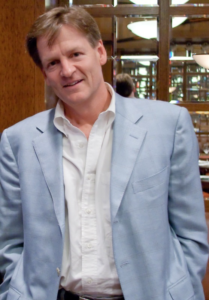
Author Michael Lewis
Plot summary: the story is about four men who came to believe that the subprime mortgage industry was slated for a big fall, so they devised ways to place bets on such a fall. To them, there was a serious housing bubble and they meant to collect when the collapse of the bubble came.
I had high hopes for Lewis’s book revolving around Jewish identity. Nearly thirty years ago I read his book Liar’s Poker, an account of his own personal experiences with the shenanigans of Wall Street in the rollicking eighties. I can’t remember the details of the book but do know that so many of those accused or convicted of financial malfeasance were Jewish, so I hoped we’d see that with the subprime story, too.
I was encouraged when I read the second sentence of Chapter One of Lewis’s The Big Short: “[Steve Eisman had] grown up in New York City, gone to yeshiva schools, graduated from the University of Pennsylvania magna cum laude, and then with honors from Harvard Law School.” Yes, I thought, this book was going to openly discuss Jewish identity on Wall Street!
A few pages later, Lewis describes Eisman’s wife and her mother talking about the United Jewish Appeal, as well as how the young Eisman studied the Talmud to find its internal inconsistencies, so I thought we might have a Jewish tale on par with Jordan Belfort’s 2007 book about his crimes, The Wolf of Wall Street. Alas, that was the last we heard of anything explicitly related to Jews or Jewishness. What a pity, since the subprime mortgage bond collapse was in fact an intensely Jewish affair.
We could have read about Lloyd Blankfein of Goldman Sachs, Maurice “Hank” Greenberg of AIG, Sandy Weill of Citigroup, Dick Fuld of bankrupt Lehman Brothers or Alan Schwartz of the failed Bear Sterns, and many, many other Jewish players on Wall Street. Most remarkably, we read nary a word on the real 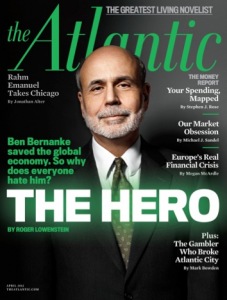 powers in finance, people like “The Three Apostles,” Fed Chairman Alan Greenspan, Treasury Secretary Robert Rubin or his successor Larry Summers. Nor do we read more than passing reference to two-term Fed Chair Ben Bernanke, who oversaw the entire life of the subprime mortgage fiasco, serving from 2006 to 2014.
powers in finance, people like “The Three Apostles,” Fed Chairman Alan Greenspan, Treasury Secretary Robert Rubin or his successor Larry Summers. Nor do we read more than passing reference to two-term Fed Chair Ben Bernanke, who oversaw the entire life of the subprime mortgage fiasco, serving from 2006 to 2014.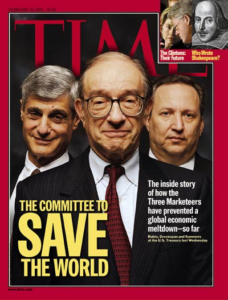
Because of this focus on a mixed group of Jewish and Gentile traders who made great sums of money, we never read about the larger narrative surrounding the financial crisis of those years. (This review of then Treasury Secretary Hank Paulson’s account of the crisis gives a suitable feel for how tremendously dangerous the period was.)
In The Big Short, Lewis follows previously mentioned Steve Eisman, as well as a California neurologist-turned hedge fund manager, Michael Burry, who had only one eye as the result of a childhood illness. Burry was famous for his lack of social skills, perhaps, as he later came to believe, as a result of Asperger syndrome. Burry is indeed a colorful character, captured in this sentence from Lewis: “Of his feeling about the patients: ‘I wanted to help people — but not really.’” For a set period of time, investments and trading obsessed Burry.
Also featured in the book is Greg Lippmann, head subprime manager at Deutsche Bank, but Lewis never once refers to Lippmann as Jewish. This just isn’t the story Lewis wants to tell, so Hollywood screenwriters also left out this important Jewish angle.
Turning now to the 2015 film version of The Big Short, we have a number of interesting points mostly having to do with the usual tactic of substituting non-Jewish actors for actual Jews on Wall Street, beginning with Steve Carell as Steve Eisman. Director and co-screenwriter Adam McKay, who is married to the Jewish Shira Piven, does, to his credit, faithfully show the scene where the young Eisman is in a synagogue with his rabbi. But my feeling is that this is done so much in passing that it will be lost on most (non-Jewish) viewers. More to the point, however, is that actor Steve Carell simply doesn’t come across in any way as Jewish. Zilch.
What you will find in The Big Short is that some of the most Aryan-looking male actors in contemporary Hollywood are playing roles that more accurately would go to Jews. There is Ryan Gosling, Christian Bale (nice touch with the given name), Brad Pitt in a lesser role, and the previously mentioned Carell.
I need to credit David Duke and our TOO editor for alerting me to the film The Big Short. If you go here and scroll down Jan. 4, 2016, you’ll find it. Both Duke and Kevin MacDonald have repeatedly emphasized how important financial contributions from billionaire Jews have been in elections and in the take-over of American culture, so paying attention to the Wall Street-Hollywood nexus is critical.
Anyway, here’s what director McKay did with the Jewish Lippmann character: he gave it to Ryan Gosling:
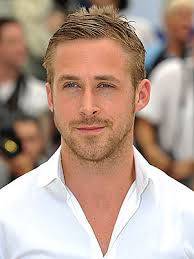
This leaves us with only the issue of Steve Carell’s character, called Steve Eisman in the book, Mark Baum in the film. As mentioned, I don’t think the film succeeds in creating a recognizable Jewish character. Carell at every turn comes across as a goy:
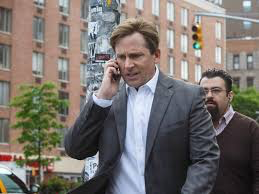
While he tries to be obnoxious, he never assumes Jewish caricatures or relies on Jewish stereotypes, so I think McKay (and Hollywood) fail in the effort to massage Eisman into a pushy but — contradictorily — highly moral New York Jew. This was not in the book. The Eisman portrayed by Lewis thought many financial types were stupid but he wasn’t morally upset by the crash of the subprime mortgage market. As Lewis writes:
“That Wall Street has gone down because of this is justice,” Eisman said. The only one among them who wrestled a bit with their role — as the guys who had made a fortune betting against their own society — was Vincent Daniels.
In the film, pains are taken to show Baum’s character as the moral center of the whole collapse, particularly at the end where Baum is morally tortured over making the decision to cash in on his bets. “I am going to try to find moral redemption,” he mouths. (But of course he takes the millions.)
Again, I don’t think the film succeeds in conveying the message that this Jewish character is morally superior to those around him because, as I’ve argued, the reference to him as Jewish is too much in passing — but mostly because Carell comes off as totally goy, albeit one from New York.
Another thing mentioned by David Duke is the fact that the associates at Goldman Sachs with whom Dr. Burry consults are a White gentile-looking woman and one Rajeev Jacob, who is made-up to appear African American or of Indian ancestry:
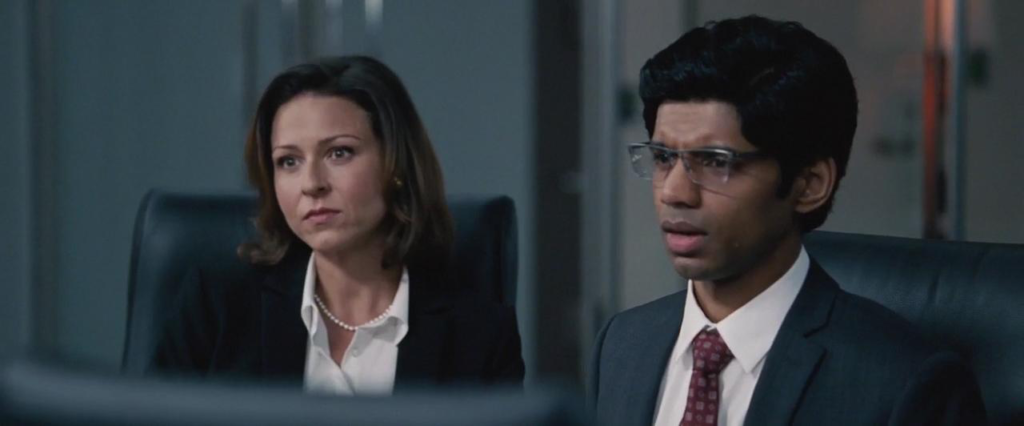
Vanessa Cloke and Rajeev Jacob as Goldman Sachs Employees
Further casting against type comes with Kathy Tao, Baum’s advisor at the investment bank. Twice in the movie, male workers straighten up when Kathy comes around. Yes, those wise Black women can crack a mean whip at financial institutions in New York. It’s been that way for decades, I’m sure.
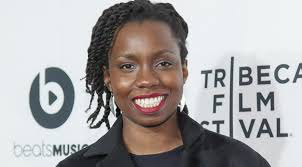
Adepero Oduye as Dathy Tao
Now that we’ve looked at visual issues and identity in The Big Short, let’s consider some of the big dollar figures at stake. “Million” hardly has meaning in the debacle, with “billion” being a far more common term (and “trillion” popping up now and again). Despite the impression readers and viewers might have, the four main characters featured in book and movie were hardly the biggest players in the subprime mortgage game. Let’s look at a Vanity Fair excerpt Lewis did in March 2010, to understand Burry’s figures:
It was precisely the moment he had told his investors, back in the summer of 2005, that they only needed to wait for. Crappy mortgages worth nearly $400 billion were resetting from their teaser rates to new, higher rates. By the end of July his marks were moving rapidly in his favor — and he was reading about the genius of people like John Paulson, who had come to the trade a year after he had. The Bloomberg News service ran an article about the few people who appeared to have seen the catastrophe coming. Only one worked as a bond trader inside a big Wall Street firm: a formerly obscure asset-backed-bond trader at Deutsche Bank named Greg Lippmann. The investor most conspicuously absent from the Bloomberg News article — one who had made $100 million for himself and $725 million for his investors — sat alone in his office, in Cupertino, California. By June 30, 2008, any investor who had stuck with Scion Capital from its beginning, on November 1, 2000, had a gain, after fees and expenses, of 489.34 percent. (The gross gain of the fund had been 726 percent.) Over the same period the S&P 500 returned just a bit more than 2 percent.
A far bigger winner was John Paulson, who appears briefly, having spoken to Lewis for the book. Personally, what I’d like to have read about is Paulson’s bets on subprime mortgages. While Burry did extremely well for his fund, just shy of a billion dollars, Paulson made history by earning $4 billion for himself in 2007, followed by $5 billion three years later. “Paulson, bucking the trends and the advice of other investors, gambled that the mortgage market would collapse. His bet paid off immensely. In 2007, the funds run by Paulson were up $15 billion — a staggering investment return rate of nearly 600%.” Of course, for career reasons, I can see why Lewis didn’t dwell on Paulson in the book, and naturally Hollywood was happy to let it go unmentioned.
Paulson’s mother was Jewish, and Paulson has worked in a highly Jewish milieu during his education and career, beginning with a Sidney Weinberg/Goldman Sachs scholarship. Later, he worked with Leon Levy at Odyssey Partners, then moved to Bear Stearns. His older sister, Theodora Bar-El, is an Israeli biologist. Perhaps I should read Gregory Zuckerman’s 2009 book, The Greatest Trade Ever: The Behind-the-Scenes Story of How John Paulson Defied Wall Street and Made Financial History , to fill in the missing gaps in this story. (And as far as I know, Hollywood has yet to make a film from Zuckerman’s book.)
Zooming out, we read in The Big Short that in total, according to an IMF estimation, about $1 trillion dollars was lost due to the subprime crisis. (Oddly, at the end of the film, we read: “When the dust settled from the collapse, 5 trillion dollars in pension money, real estate value, 401k, savings, and bonds had disappeared.” I can’t account for this large discrepancy.)
Let’s stick with the IMF’s estimate of $1 trillion. That’s a lot of billions in there, far, far more than Paulson’s money alone. So where did the money go? More to the point, who is responsible? Lewis allows his characters to blame stupid investment banks, but others point directly to those in charge of America’s finances: “The Three Apostles — Greenspan, Rubin, and Summers,” as well as Greenspan’s successor, Bernanke.
One can turn to just about any source on Greenspan et al.’s roles and find many suspicious characters. For instance, let’s consider this unlikely source for suspicion about what The Three (Jewish) Apostles and other high-placed Jews were up to — Clyde Prestowitz’s 2010 The Betrayal of American Prosperity. Here, Prestowitz notes how in 1989 and 1993, financial instruments that later played a central role in the meltdown of 2008–9 were exempted from government oversight. For instance, Greenspan was adamant about getting the government out of the way. “In fact, Greenspan largely halted the Fed’s active oversight of the banking industry.” Joined by Treasury Secretary Robert Rubin and his successor Lawrence Summers, “the three mounted an aggressive campaign to halt any efforts to regulate trading of new derivative instruments.”
When measures to impose constraints on these risky trades were being considered, Greenspan, Rubin, and Summers pointedly blocked them. Also, when Brooksley Born, Chairwoman of the Commodity Futures Trading Commission attempted to do her job, Summers aggressively attacked her actions. Right on cue, Greenspan, Rubin and Arthur Levitt of the Securities and Exchange Commission pressured Congress to straightjacket Born. (I thought of the beleaguered Ms. Born when in the film version of The Big Short, Georgia Hale, an employee at Standard & Poor’s Financial Services, was grilled by a visiting Mark Baum [Steve Eisman in the book].)
This bullying of Born persisted into 2000, as Greenspan continued to insist that Wall Street should be trusted and left to its own devices. “With those assurances, Congress went ahead and stripped the CFTC of responsibility for derivatives, and President Clinton signed the bill into law in December 2000.” Meanwhile, Ms. Born quietly left government service.
It’s a familiar story, one I don’t blame Michael Lewis for not telling. Should someone wish to tackle the issue of Jewish involvement in serious amounts of misappropriated money, surely they’ll have to start with Rolling Stone journalist Matt Taibbi’s brilliant quote about Goldman Sachs: “The world’s most powerful investment bank is a great vampire squid wrapped around the face of humanity, relentlessly jamming its blood funnel into anything that smells like money.” Then someone must write about the consistent ethnic nexus in these stories.
White societies throughout the world have been and continue to be subverted culturally, diluted through scandalous levels of non-White immigration, and drained of wealth and treasure, which Greg Johnson of Counter-Currents summed up so accurately:
Jews, of course, more than any other people, are aware of the necessary conditions of collective survival. They are concerned to secure these conditions for their own people even as they deny them to us. The obvious conclusion is that they mean for us not to survive as a people. America is being corrupted, exploited, degraded, and murdered by the organized Jewish community.
The half-dozen or so Hollywood films I’ve examined here at TOO, including this latest blockbuster, The Big Short, play a central role in covering up what is so stunningly obvious. We need to understand these propaganda techniques and somehow teach others to see them as well. Otherwise, organized Jewry will continue to siphon off vast sums of money from the greater economy and employ it, among many other projects, in the funding (that is, control) of the upcoming presidential election. Eight more years of the wrong person in office could finally be our death-knell.





Comments are closed.